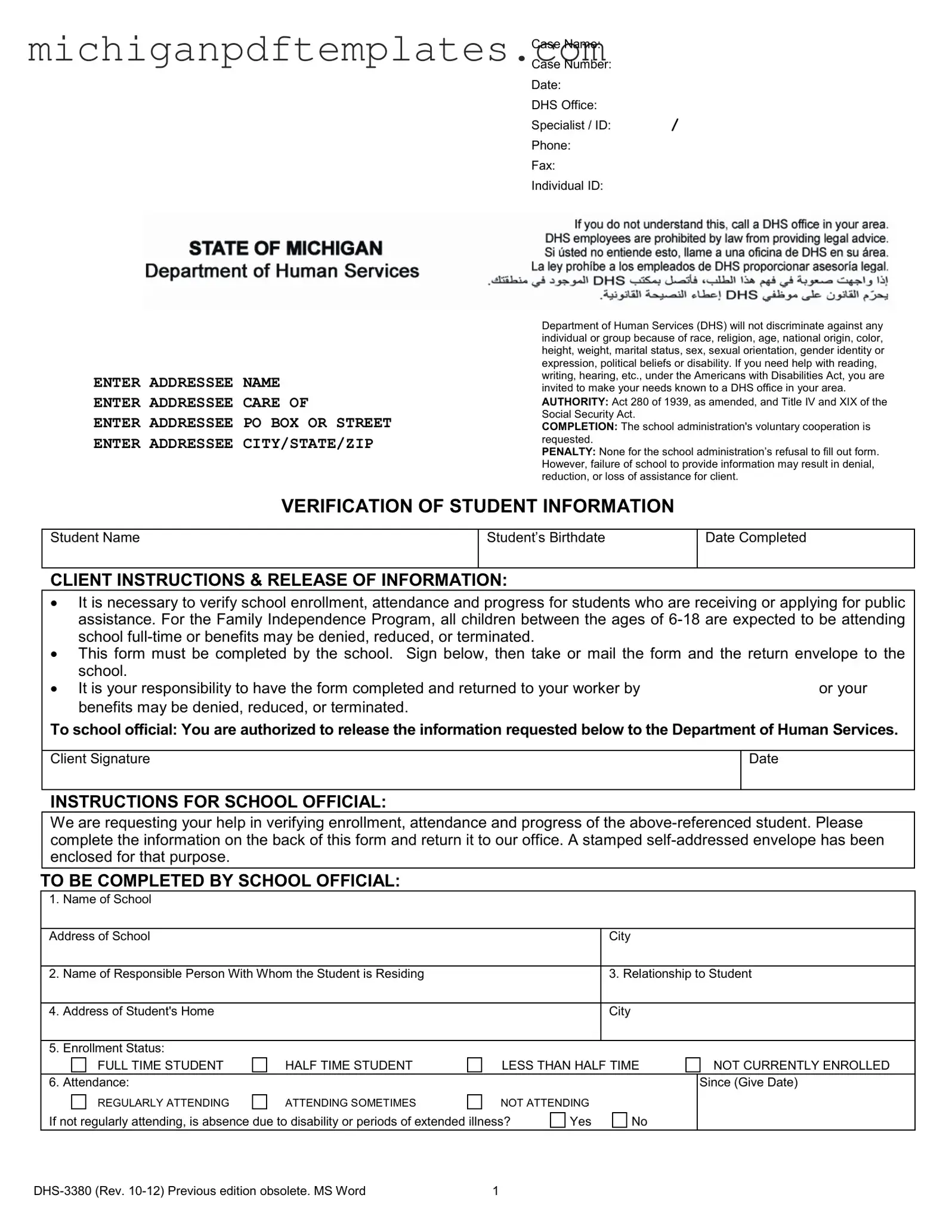The Michigan Verification Student form plays a crucial role in the process of verifying student information for those receiving or applying for public assistance. This form is essential for ensuring that students between the ages of 6 and 18 are enrolled in school full-time, as this is a requirement for continued benefits under the Family Independence Program. The form requires specific details, including the student's name, birthdate, and enrollment status, which must be completed by school officials. It includes sections for verifying attendance, the type of educational program, and any relevant comments from the school. Importantly, the form emphasizes the voluntary cooperation of school administrations, noting that while there is no penalty for refusing to complete it, failure to provide necessary information could lead to a denial or reduction of assistance for the client. The form also adheres to the Americans with Disabilities Act, inviting individuals with specific needs to communicate those to their local Department of Human Services office. Overall, this form serves as a vital link between educational institutions and social services, ensuring that students receive the support they need while maintaining compliance with state and federal regulations.
